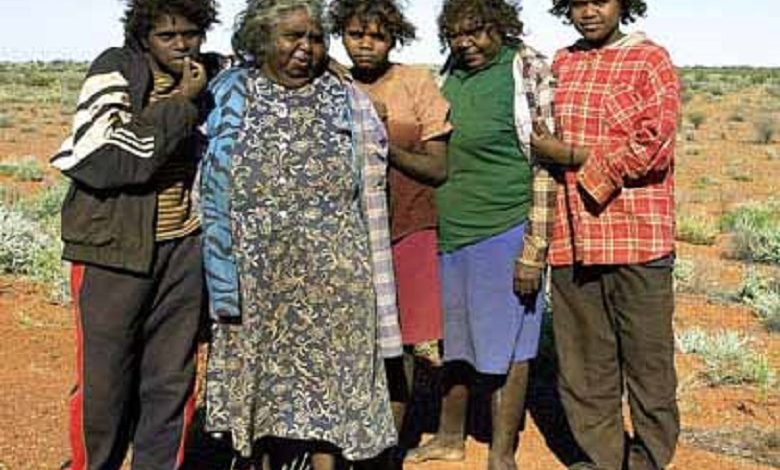Why 46,000 years artifacts of the aborigines of Australia destroyed?

Man is known to be the biggest enemy of nature, but why are the ancient artifacts of the aborigines of Australia, which were created 46,000 years ago, were destroyed today?
No natural disaster will cause as much harm as we inflict on our Earth and its inhabitants. People are incredibly corrupt when it comes to money. For example, a mining company, which is in a hurry to make a quick profit, can destroy a unique historical landmark of the most ancient earthly civilization. Meanwhile, this sacred place is over 46,000 years old!
It is rather challenging to determine which culture and civilization are the most ancient on Earth. It is not surprising that, over the centuries, the attempt to find an answer to this question has caused such heated fundamental controversy among historians. Until recently, almost everything was based only on theories and assumptions, and it seemed that an unambiguous answer to this question would never be obtained.
Since the 1980s, there has been a theory that humans began to spread throughout the world by gradually migrating from Africa. More than 60,000 years ago, the first humans reached the limits of Australia. Some researchers claim that the descendants of these people have the most prolonged continuous culture ever. Australia’s aboriginal population has long been assumed to be one of the world’s oldest known cultures and civilizations.
New historical research on this topic only confirms this theory. A study titled “Genomic History of Aboriginal Australia” has traced the migration of modern Aborigines from Africa to Australia 58,000 years ago. In 2016, a research team led by Cambridge University professor Eske Willerlsev examined the genomes of 83 Aboriginals and 25 Papuans from the highlands of New Guinea, conducting the most comprehensive genomic study of Indigenous Australians. The results showed that modern Australian Aborigines are descendants of people who first landed on the shores of Australia about 60 thousand years ago.
These also confirm that all people have common ancestors from Africa and spread across the globe due to colossal migration. The face of the Earth was changing; people were mastering new territories. The continent of Australia has a vast area, and there are considerable differences in weather conditions. Therefore, the development of tribes in different parts of the continent went on in slightly different ways.
In their mythology, the Australian Aborigines speak of Dreamtime (Alchera). They believe that their ancestors created the whole world and that all scientific knowledge comes from their ancestors. According to some of their legends, some heroes traveled through the undeveloped land and shaped it as we know it today, with all its attractions, including mountains, rivers, plants, animals, and so on. These myths are likely based on the s tory of the actual migration that took place 58,000 years ago. It has simply survived to this day, passing through the centuries in the songs of folklore.
History must be carefully preserved. After all, without historical memory, where can a nation come? Sadly, so many people do not consider this critical. Those for whom God is money are destroying Australia’s archaeological heritage. The mining company carried out a series of explosions to mine iron ore in West Pilbara in Australia. This operation destroyed a significant part of the Australian Aboriginal cultural heritage.
Even though Aboriginal people own the area, the mining company went to expand ore mining in the region. The traders demonstrated complete indifference to the significance of the historical site containing evidence of human activity during and after the last ice age.
Unfortunately, such an incident is not uncommon. The Australian government has shown almost complete indifference to heritage sites. Many years ago, ancient caves in the Juukan gorge were damaged similarly. In 2014, archaeologists unearthed ancient artifacts in the area, proving that the region is much older than experts initially believed.
The Sydney Light Rail project is another example of the construction that destroyed a place of immense importance to Australian Aborigines. When construction began a few years ago, the leading site was an important Aboriginal heritage site, but it was too late by then. An MP in the area, David Shoebridge, told the press at the time: Everything was destroyed. We need to learn a lesson from this and change the law. But so far, nothing has happened, despite the protests and statements.
In addition, a gas project is underway that threatens to destroy all examples of ancient rock art on the Burrup Peninsula in northwestern Australia. There are almost 37,000 rock paintings!
Unfortunately, many of these and other Aboriginal heritage sites do not have an appropriate designation on the list of national heritage, which could protect them from destruction. The land is legally owned by the people named on the mining licenses, not by the traditional indigenous owners. They lived on the ground for centuries, long before the arrival of British settlers.
The crucial archaeological significance of the recently destroyed Juukan Gorge was confirmed after a mining permit was obtained. Nothing could be changed. After all, if the territory is not included in the national heritage list, this leads to such sad results for the archaeological community, historians, and the locals.
It is impossible to predict whether activists in the global movement to defend the interests of indigenous peoples and other minority groups will bring about a change in such unfair laws. I would like to believe that this will happen and this so-called “progress” will be stopped. These apply not only to Australia; this happens all over the world. But the awful thing is that it is too late for many heritage sites.




